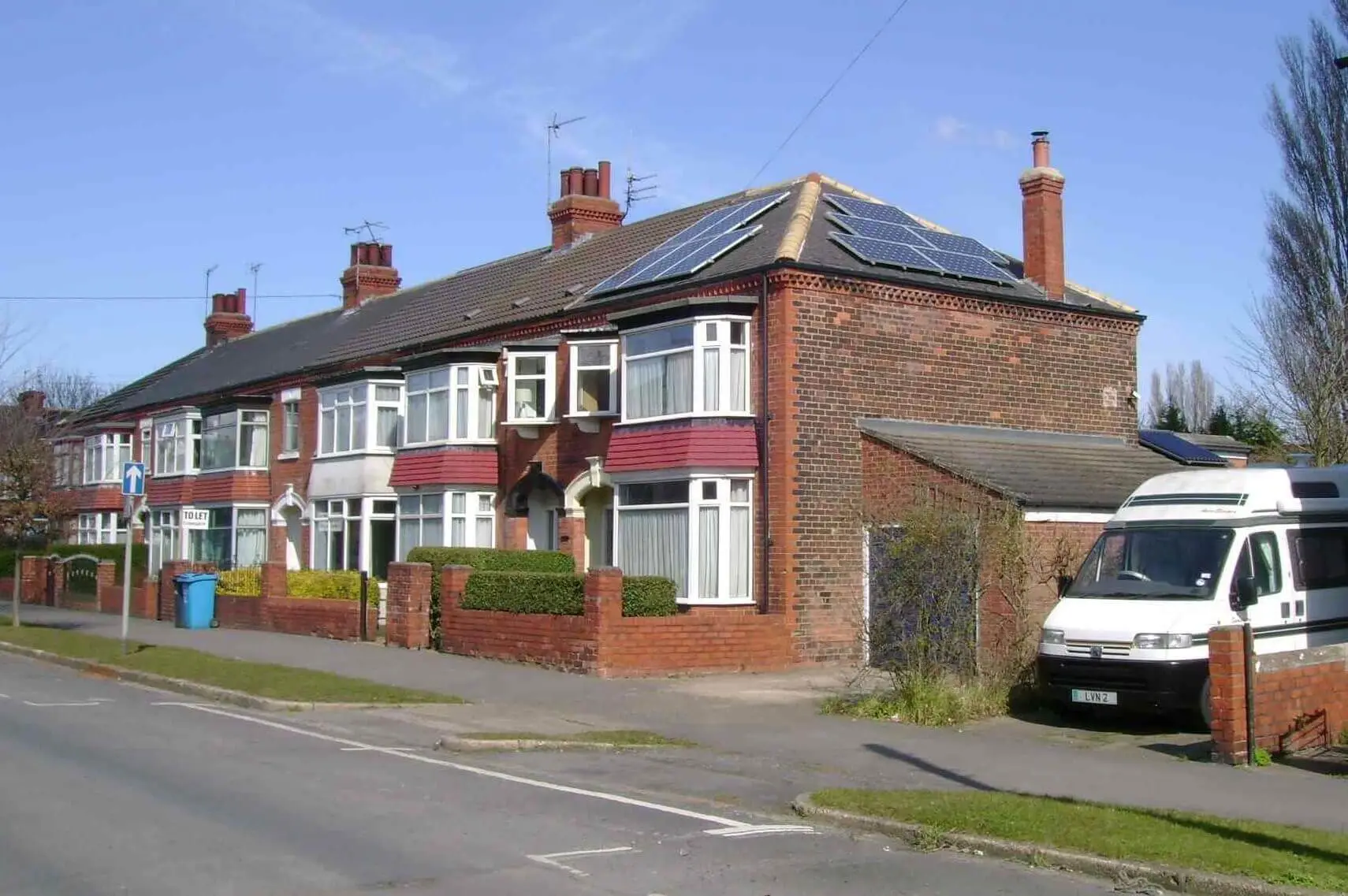
Installed Measures:
Personal Story:
This is the tale of Inglehome, how we transformed a typically cold, draughty Hull terraced into a cosy, low energy Superhome, with zero net bills and greenhouse gas emissions.
We moved to the property in 2012 with the express aim of taking an older, inefficient house, and raising it to a decent standard of comfort and energy efficiency.
Motivations:
We wanted to live in a comfortable, healthy and beautiful home, having been sick of living in damp, mouldy, and wasteful properties.
We wanted to use natural materials, reuse wherever possible, and reduce waste, whilst avoiding toxic and energy intensive materials.
But most of all we wanted to reduce greenhouse gas emissions. We must keep global warming below 1.5˚C, or even 1˚C, to avoid climate catastrophe, yet we’re currently on course for more like 4 or 5˚C. This means increased extreme weather events (droughts and floods), rising sea levels, and having to relocate large parts of Hull, London, New York, and large areas of south east Asia, within a few decades. Climate change is already estimated to be killing 400,000 people a year and climate refugees are predicted to reach hundreds of millions by mid-century. How will the world economy and political systems cope?
It doesn’t have to be like this. Every tonne of carbon dioxide saved reduces the severity of the crisis. So I took direct action on our own house.
Visiting Superhomes and learning from them was invaluable for me; so now, as the 1st Superhome in East Yorkshire, I’m delighted to share what I’ve learnt, for the interest and benefit of others.
Property:
The house was a fairly typical Hull terraced built in 1932.
It has solid brick walls, was very draughty and in Winter got very cold only an hour after the heating went off. The heating was provided by an inefficient vintage gas boiler.
Heating bills would have been about £1,500 a year.
We now receive about that much for generating renewable energy, so are saving around £3,000 a year.
Measures:
Most of the changes and savings have come from insulation, and more insulation.
The greatest heat loss was through the solid brick walls, and insulating these is the greatest single saving. Roof insulation was also significantly increased.
Careful attention was also paid to draught proofing throughout the insulation works, especially under the downstairs floorboards, where we used to feel cold air blowing between our toes. Also around window frames, chimneys and penetrations into the roof space were sealed.
As air tightness is improved it is important to provide controlled ventilation, so we put an extractor fan with heat recovery in the bathroom. This removes stale, damp air while keeping most of the heat.
After demand had been reduced as far as possible, we then considered renewables to help meet our remaining energy needs- Solar PV for electricity and Solar Thermal to provide hot water.
Our old gas boilers were replaced with a Heat Pump. It’s powered by electricity but for every unit it consumes it extracts 3 units of renewable heat from the outside air.
In our well insulated home it already emits less CO2 pollution than a modern gas boiler. As more renewables supply UK mains electricity, the associated CO2 emissions will drop, leading to greater savings in the future.
Benefits:
A cold, draughty house has been totally transformed into a cosy, warm Superhome.
It’s now a comfortable temperature 24 hours a day.
And we’re saving around £3,000 a year.
Our energy bills used to be around £1,500 a year, and this has been reduced to ~£300.
We’re paid £1,750 a year for generating renewable energy- electricity and heat.
But most importantly of all, our net greenhouse gas emissions have been reduced towards zero.
We still consume electricity in winter, when the heat pump is powering the heating and hot water; but in summer our solar PV exports electricity. So overall, we’re close to net zero emissions.